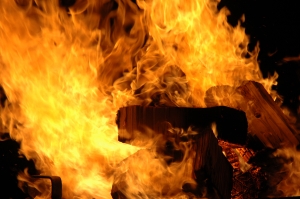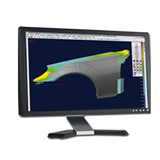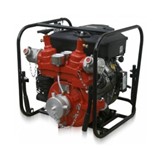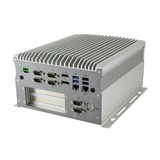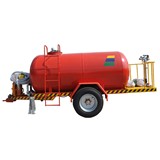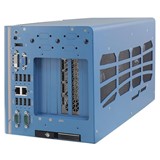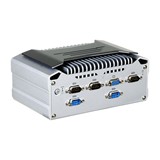Beginning with an ignition point, the models can map how fires behave as they grow, accurately predicting their overall temperature and pinpointing dangerous hotspots that responding personnel should avoid.
"When you’re sending a fire fighter into a dangerous situation you want to have an idea of the temperatures they’re going to face," Debbie Mackay, who recently completed her PhD at UNSW, and was involved in the research project with the NSW Fire Brigade, said.
The models also detail how fires can respond to sudden bursts of oxygen resulting from a smashed window or an opened door, offering additional information for fire fighters planning their route of attack and evacuation.
"Venting a room can be a good thing, as it lets smoke and heat out, but if you’re letting too much oxygen in you actually feed the fire, which can lead to explosive events such as backdrafts and flashovers," Mackay explained.
With winter fast approaching, it’s an important consideration as fire fighters once again prepare for their riskiest season. Of the 4000-plus residential fires in NSW last year more than 28 per cent occurred during winter.
An expert in computational fluid dynamics, Mackay can isolate parts of her computer models to show fire fighters exactly what is happening with smoke, flames and the direction of air flow.
"There are all sorts of little things the fire fighters can learn from the models which they can’t actually see when they are facing a real fire," she said.
"When they’re inside a burning building all they see is a mass of smoke."
The models have also piqued the interest of the NSW Fire Brigade's investigation unit, which sees an opportunity to use them to trace a fire backward in time to its origin.
"Such fire scene mapping linked with these models would represent a real step forward in forensic fire scene examination," Chief Superintendent Greg Buckley of the NSW Fire Brigade said.
Mackay and her colleagues in the School of Mechanical and Manufacturing Engineering at UNSW began with a controlled fire inside a small one-metre cubed enclosure, where they could carefully monitor all the variables, including wind conditions and the impact of certain building materials.
They then graduated to a shipping container, and eventually reached the pinnacle of burning down a house in Braidwood, NSW that was due for demolition.
Heat resistant sensors were positioned in the house and recorded information about temperature and airflow. This data, along with information about the type of fire, its ignition and the present materials, are all fed into the computer models.
Future research will explore the behaviour of fires in different scenarios and larger structures, such as apartment blocks.

